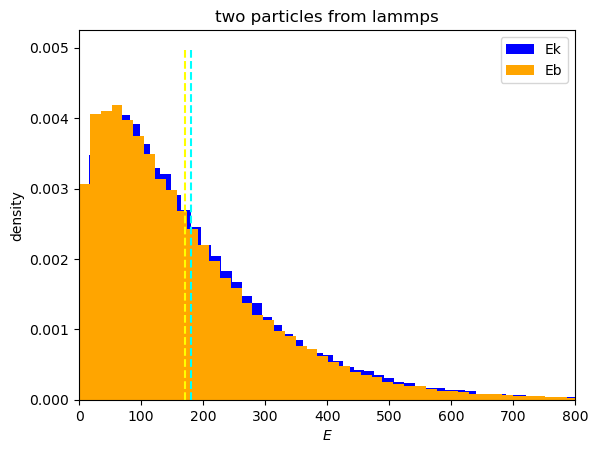Hi everyone!
I’m trying to simulate a small system with two particles interacting by harmonic potential of a spring, and use the NVT intergrator for the simulation. And the version of Lammps is 20 Nov. 2019.
However, as I processed my data, I found that the potential energy of this system disagree with what epuipartition theorem told us it should be(i.e. 3kT/2), instead its value slightly deviates from 3kT/2.
Is this because the system is too small?
Here are some results :
1.the energy distribution for a system above with kT=120,dt=0.005,tau=0.5.the dashlines are the average values of kinetic(yellow) and potential(cyan) energy.

2.then I change the temperature and calculate their average potential energy
and my .in file and .data file are as follows:
1.in file
#1.Initialize
clear
units lj
atom_style molecular
boundary f f f
read_data coupledog.data
#2. potential
bond_style harmonic
bond_coeff 1 0.5 1.0
#4. data
thermo 100
thermo_style custom step temp ke ebond etotal
thermo_modify norm no
#5.run
timestep 0.005
fix 10 all nvt temp 120.0 120.0 0.5
run 10000000
- data file
LAMMPS data file for couple
2 atoms
1 bonds
1 atom types
1 bond types
-5000.0 5000.0 xlo xhi
-5000.0 5000.0 ylo yhi
-5000.0 5000.0 zlo zhi
Masses
1 1.0
Atoms
1 1 1 -0.014430 3.483336 5.619503
2 1 1 0.000000 0.000000 0.000000
Bonds
1 1 1 2
Best regards,
Mark